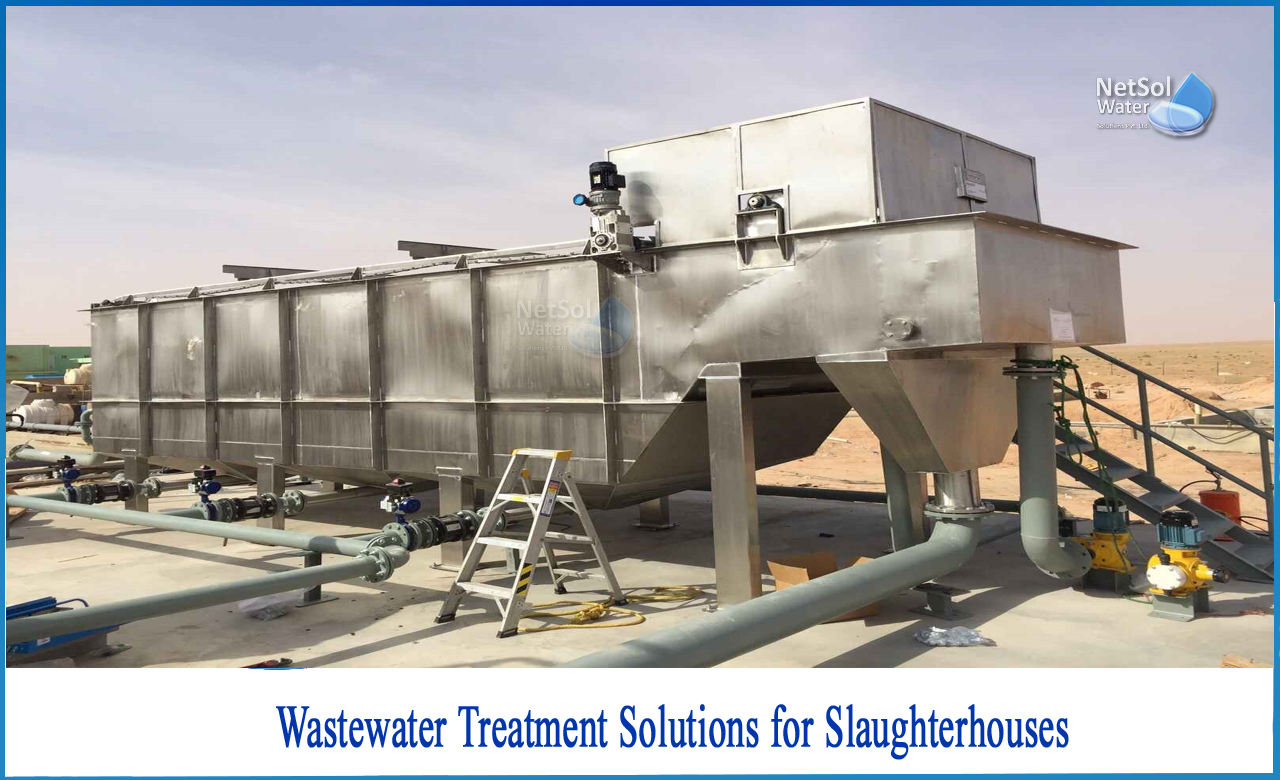How to treat waste water in Slaughterhouses?
Wastewater from a cattle slaughterhouse is a mixture of processing water from both the slaughtering line and the cleaning of the guts, resulting in a wide range of organic matter concentrations. Organic matter is the most prevalent pollutant in slaughterhouse effluents. Paunch, faeces, fat and lard, grease, undigested food, blood, suspended material, urine, loose meat, soluble proteins, excrement, manure, grit, and colloidal particles are organic load contributors to these effluents.
Due to the extremely high biological oxygen demand (BOD) and chemical oxygen demand (COD), untreated slaughterhouse waste entering a municipal sewage purification system can cause serious problems. As a result, treating slaughterhouse wastewater is critical to preventing high organic loading to municipal wastewater treatment plants.
Fine screening, sedimentation, coagulation– flocculation, trickling filters, and activated sludge processes are the most commonly used methods for treating slaughterhouse wastewaters.
Even though biological processes are effective and cost-effective, both require long hydraulic retention times and large reactor volumes, high biomass concentration, and sludge loss control to avoid sludge wash-out. Dissolved air flotation (DAF) and coagulation–flocculation units are popular physicochemical processes for removing total suspended solids (TSS), colloids, and fats from slaughterhouse wastewaters.
Pollutants
Blood, faeces, and urine are the main pollutant sources during the slaughtering process, as are wash water (carcasses, floors, utensils, etc.), food residues mixed in stomachs, and offal waste. As a result, the primary pollutants are organic and biodegradable, and wastewater contains a high level of suspended solids. There are no toxic substances in general. The amount of treated meat determines the standard wastewater treatment sizing.
Slaughter necessitates a large amount of water, which can range from 6 to 36 cubic meters per tonne (live cattle), and pollutant levels can range from 6.5 to 23.5 kg per tonne.
Regardless of the type of meat processed, slaughterhouse wastewater contains a variety of organic compounds, both in solution and in suspension. Pollutants contain organic matter, which is similar to that found in domestic wastewater. The main distinctions are pollutant concentrations and nutrient ratios.
Other pollutants that are not emitted by cattle slaughtering can be added, such as cleaning products (detergents and disinfectants) or processing additives (for example, table salt used in cooking tripe).
Mechanical Treatment
1: Screening, fat flotation, and sedimentation are mechanical treatments.
2: The mesh on a rotating and vibrating screen is 3–6 mm.
3: Fat is removed through flotation in a basin as a grease trap or through Dissolved Air Flotation (DAF) with retention times ranging from 20 to 30 minutes.
4: Sedimentation necessitates a 4-hour retention time.
5: The spillway should have a lower hydraulic load (1-2 orders of magnitude) than conventional systems. Domestic wastewater, for example, has a range of 8 to 15 m3/m per hour, whereas slaughtering wastewater has a limit of 0.55 m3/m per hour.
6: Primary sedimentation is typically installed as an optional feature upstream of an aerobic compartment but is not required downstream of an anaerobic compartment.
Biological Treatment
1: The most commonly used solution is an activated sludge plant, despite the fact that it requires long aeration times, a lot of air, and a high recirculation rate. It can achieve BOD removal efficiencies of up to 95%.
2: There are no specific restrictions on air insufflation methods, but the minimum dissolved oxygen (DO) concentration must be at least 0.5 mg/l.
3: A denitrification zone is added near the oxidation tank for nitrogen removal.
When combined with aerobic steps, anaerobic systems produce excellent results. They achieve results with a 95% success rate. Trickling filters are almost never used (biologic filter). If the wastewater is not diluted with a large amount of domestic waste water, they are frequently preceded by anaerobic treatment.
Chemical coagulation and sedimentation are both tertiary processes or, in some cases, a single treatment. Chemical precipitation employs the use of aluminum sulphate, ferrous sulphate, and ferric chloride.
Ferric chloride and lime produce a pH correction (range 10-11) as well as a significant COD reduction. A tertiary treatment can be added for high-quality effluent (i.e. 20 mg/l BOD), for instance, rapid or slow sand filters, a micro screen, or a phytoremediation plant.
Netsol Water is Greater Noida-based leading water & wastewater treatment plant manufacturer. We are industry's most demanding company based on client review and work quality. We are known as best commercial RO plant manufacturers, industrial RO plant manufacturer, sewage treatment plant manufacturer, Water Softener Plant Manufacturers and effluent treatment plant manufacturers. Apart from this 24x7 customer support is our USP. Call on +91-9650608473, or write us at enquiry@netsolwater.com for any support, inquiry or product-purchase related query.



